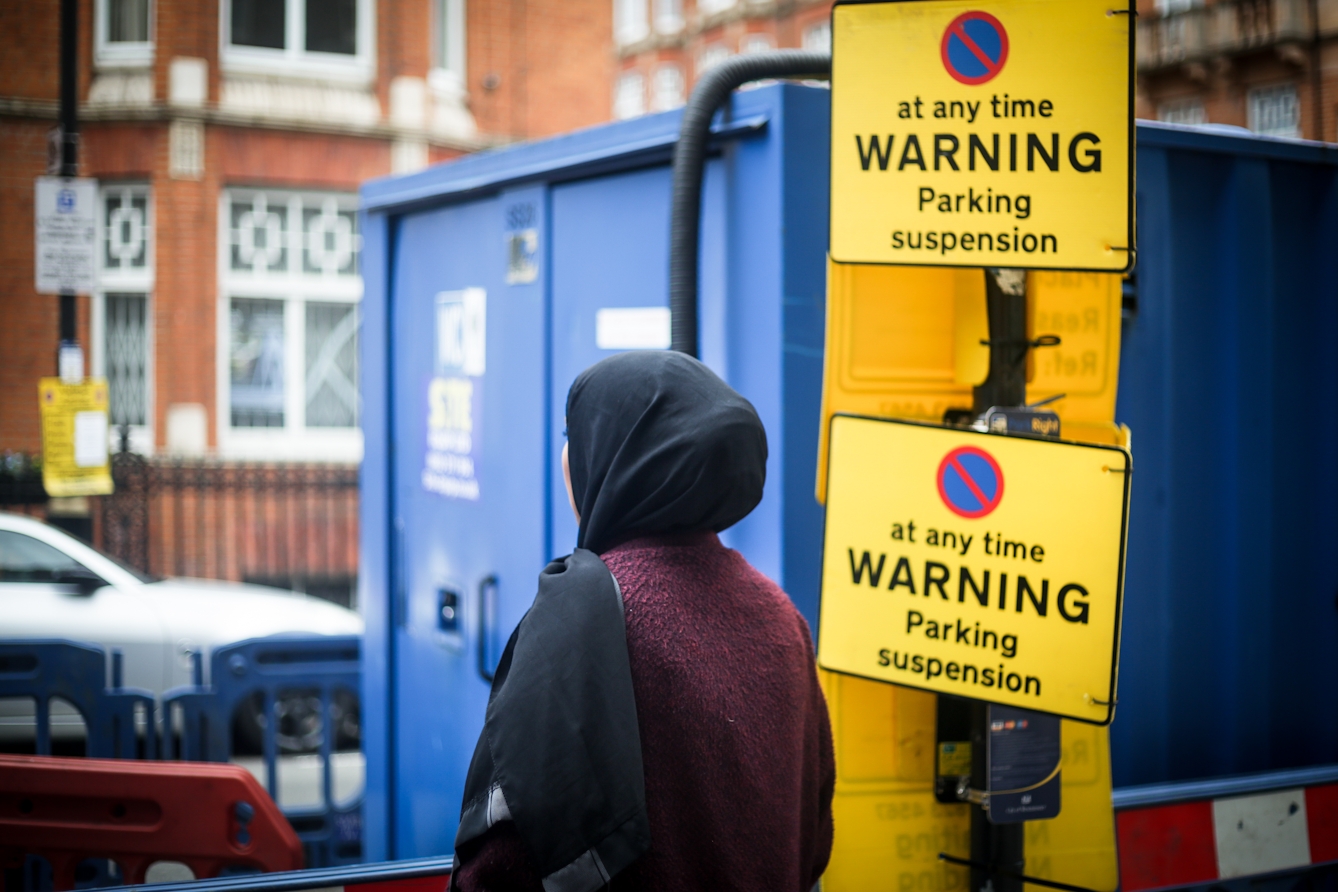Long-term use of skin-bleaching products can cause visible skin damage and scarring, and less visible but serious internal effects. A true story of liver failure and permanent health problems highlights the risks.
When skin bleaching goes wrong
Words by Ngunan Adamuphotography by Amaal Saidaverage reading time 6 minutes
- Serial

Skin bleaching is not illegal in the UK, and when used professionally and within EU and UK regulations, it isn’t harmful. However, excessive skin bleaching and high levels of particular ingredients in products sold illegally are dangerous.
Before I looked into the effects of extreme skin bleaching, I wanted to know exactly how skin-bleaching cream is categorised – is it cosmetic or medical?
Skin-lightening agents in cosmetics are often used to produce an even skin tone, usually to the face and neck, but sometimes more extensively over larger areas of skin, or even the whole body. These products are marketed as either cosmetic, to improve the appearance of your skin, or as a treatment for particular skin conditions like hyperpigmentation.
The distinction between a cosmetic and a medicine is important from a regulatory and health and safety perspective because, among other things, a cosmetic should not contain active pharmaceutical ingredients, otherwise it is classified as a drug, according to EU rules. Many skin-bleaching products sold on the high street are mislabelled as cosmetics, when in fact they are drugs.
By law, hydroquinone and steroids cannot be used in cosmetic products sold in the UK. However, many countries have not banned their use, so products purchased from overseas suppliers may contain them. The sale of illegal skin-lightening treatments is an ongoing problem in some parts of the UK, and UK Trading Standards agencies have identified imports of skin-lightening creams containing hydroquinone, steroids and mercury.
More: How the invention of the modern syringe led to increasingly dangerous drug use
I spoke to Councillor Victoria Mills from Southwark Council in London and Paul Gander, Trading Standards Team Leader in Southwark, who, with National Trading Standards, are working to clamp down on the sale of illegal cosmetics in their area. Nevertheless, it seems that even with prosecutions and charges, sellers continue to stock these products, which people can buy from ‘under the counter’.
For example, shopkeeper Banaras Hussain was still able to restock with illegal skin-bleaching products after being prosecuted. To me, this showed that the skin-bleaching market is so lucrative that sellers are willing to risk a criminal record. I asked National Trading Standards if they could impose harsher sentences and they agreed that it was something they were looking into.

Ayan, 29: “The reason sounds really stupid now. I did it for the first time around six years ago. I was getting ready to get married to a man and he ended up leaving me for someone else. It’s stupid, but I thought he left because I wasn’t light enough.”
The dangers of extreme skin bleaching
According to the NHS, the possible side effects of using products that contain hydroquinone, corticosteroids or mercury include: skin becoming darker or too light, thinning or showing visible blood vessels; scarring; kidney, liver or nerve damage; and abnormalities in a newborn baby (if used during pregnancy).
Overusing skin-bleaching products can cause irreversible damage, and the skin might not return to its original condition even after bleaching has stopped. Bleaching products strip the skin of melanin, which makes it more sensitive to the sun, meaning you need to cover up with clothing and not just sun protection, otherwise you increase your risk of skin cancer. However, this does not deter many users of these illegal and dangerous products.
A cautionary tale of irreversible damage
A family friend of Nigerian heritage, who would like to remain anonymous, had been using skin-bleaching cream since the age of 18. She told me how, back in the 1970s, no one had been told about the health risks of using these products. She had applied to work for an airline as cabin crew, and everyone knew that to do this you had to have fair skin – there was no way that you could serve the elite of society with dark skin.
A cousin of hers introduced her to a cream. She got the airline job and received a lot of praise and attention from staff and customers, then realised that she couldn’t stop bleaching.
No one talked about sun protection or the danger of skin cancer. As the years passed, new products came out, and because she travelled she was able to get products in Europe that were unavailable in Nigeria, or required you to add your name to a waiting list.
She started noticing breakouts on her face and her hands felt really rough, like paper. Then she began to feel ill, but no one could pinpoint what it was. As she didn’t link her health problems to the skin-bleaching products, she continued using them until she was too unwell to fly.
The skin-bleaching market is so lucrative that sellers are willing to risk a criminal record.
In the 1990s there was a bit more information about the use of hydroquinone and mercury in these products, so when she was admitted to hospital with liver failure and uncontrollable shakes in her hands, a doctor in Nigeria told her it was years of skin bleaching that had caused her ailments.
She was prescribed medication and had to stay in hospital for a few weeks, but she was never embarrassed, as that was all she knew back then: being fair-skinned was beautiful. She met her pilot husband because she was light-skinned – she wouldn’t have met him if she didn’t bleach.
But she does warn younger women about the dangers. She no longer bleaches but has never fully recovered. Her hands still shake uncontrollably, which she feels was triggered by her liver failure. She misses her glow but always wonders what she would have looked like had she not touched skin-bleaching creams.
A generational problem
Some women who use illegal skin-bleaching products go as far as bleaching their children. Their two main reasons are firstly, believing that being light-skinned is beautiful and secondly, to hide the fact that they themselves are not naturally fair-skinned. For example, in Ghana some pregnant women have gone as far as taking skin-bleaching tablets in the hope that their newborn will be naturally light, not realising that they are damaging themselves and their unborn foetus.
It became clear to me that a lot of people either did not fully understand the possible dangers of skin bleaching, or the risks of irreversible damage. I also came to understand that the ideal image of fair skin is so deeply embedded that it overshadows any risk.
It would be wrong for me to talk about the risks of skin bleaching and not touch slightly on tanning injections. We in the Black community are so harsh on women who bleach their skin that we forget about white women who use sunbeds and tanning injections.
While sunbeds are legal, tanning injections are not. They contain Melanotan, a synthetic version of the hormone responsible for producing melanin, and it can cause depression, lack of appetite, nausea, high blood pressure and even panic attacks. Users have reported that moles appear larger and darker, and there are fears Melanotan could cause skin cancer.
But what gives skin bleaching such a negative reputation within the African and Caribbean communities is not just the danger attached to it, it is the psychology connected to it. Why do people do it in the first place?
About the contributors
Ngunan Adamu
Ngunan Adamu is a radio presenter and producer for BBC Radio Merseyside, CEO and founder of iWoman Academy/Media, and an international multimedia trainer for the BBC.
Amaal Said
Amaal Said is a Danish-born Somali photographer and poet, based in London. Her photographs have been featured in Vogue, the Guardian and the New Yorker. In 2017, she was exhibited in Los Angeles, and in 2018 her photography was featured in the fourth volume of African Lens and exhibited in Accra, Ghana.

